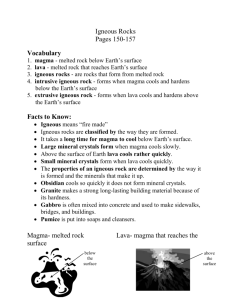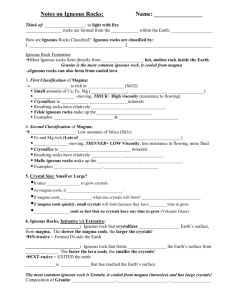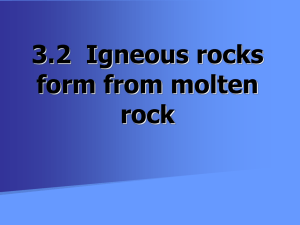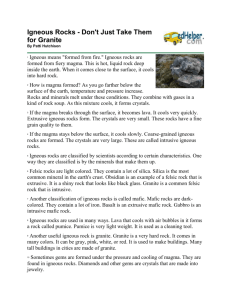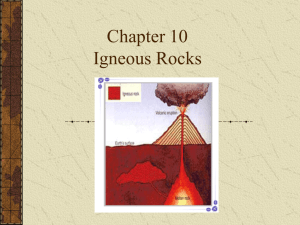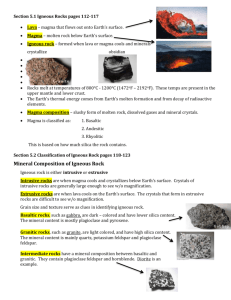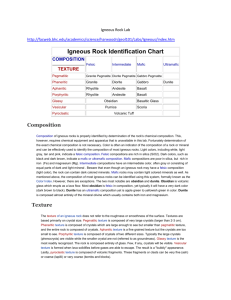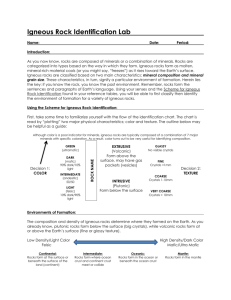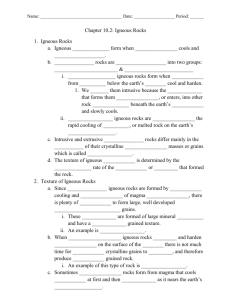Igneous-Rock-Notes-key
advertisement
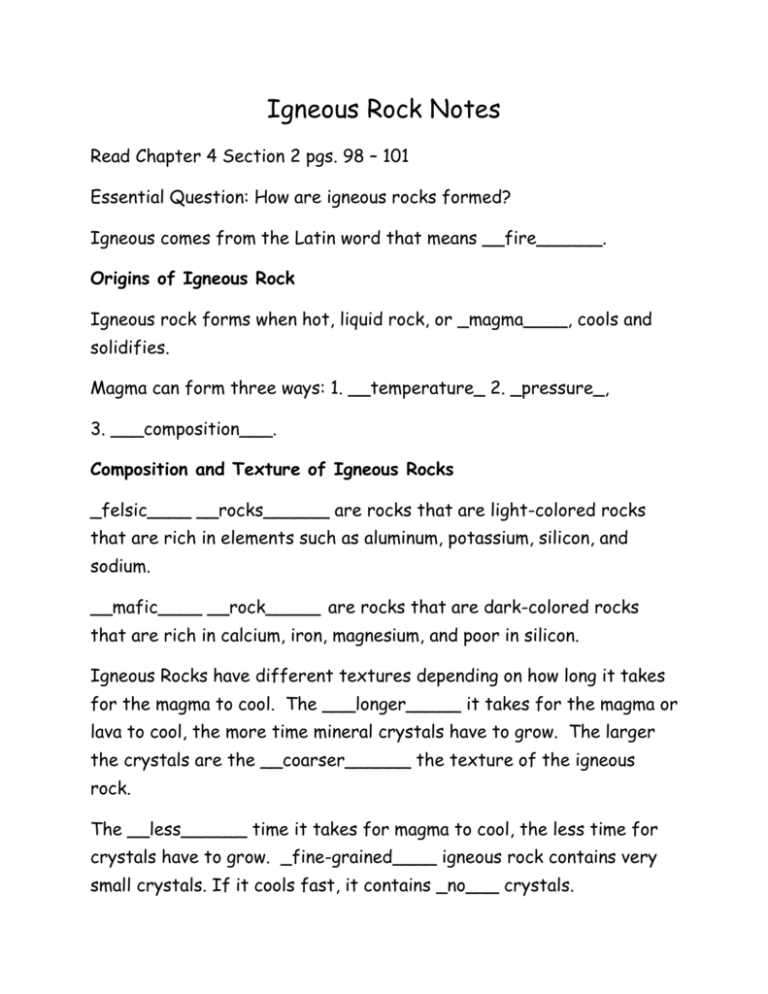
Igneous Rock Notes Read Chapter 4 Section 2 pgs. 98 – 101 Essential Question: How are igneous rocks formed? Igneous comes from the Latin word that means __fire______. Origins of Igneous Rock Igneous rock forms when hot, liquid rock, or _magma____, cools and solidifies. Magma can form three ways: 1. __temperature_ 2. _pressure_, 3. ___composition___. Composition and Texture of Igneous Rocks _felsic____ __rocks______ are rocks that are light-colored rocks that are rich in elements such as aluminum, potassium, silicon, and sodium. __mafic____ __rock_____ are rocks that are dark-colored rocks that are rich in calcium, iron, magnesium, and poor in silicon. Igneous Rocks have different textures depending on how long it takes for the magma to cool. The ___longer_____ it takes for the magma or lava to cool, the more time mineral crystals have to grow. The larger the crystals are the __coarser______ the texture of the igneous rock. The __less______ time it takes for magma to cool, the less time for crystals have to grow. _fine-grained____ igneous rock contains very small crystals. If it cools fast, it contains _no___ crystals. Igneous Rock Textures Felsic Coarse-grained Ex. granite Fine-grained Ex. Rhyolite Mafic Ex. Gabbro EX. basalt __intrusive__ igneous____rock_:___ rock formed from the cooling and solidification of magma beneath the Earth’s surface. This rock cools very slowly so it has what type or texture? ____________coarse- grained___. Plutons are large, irregular-shaped intrusive bodies. The largest igneous intrusions are ____batholiths__________. __extrusive_______ igneous_______ rock____ forms from magma that erupts, or extrudes, and onto the Earth’s surface. It cools quickly on the surface and contains very small crystals or no crystals. Identify the examples at the different stations. Look for the texture and color for clues. Stations 1 2 3 4 Felsic/Mafic Coarse-grained/ Intrusive/ Fine-grained Extrusive

